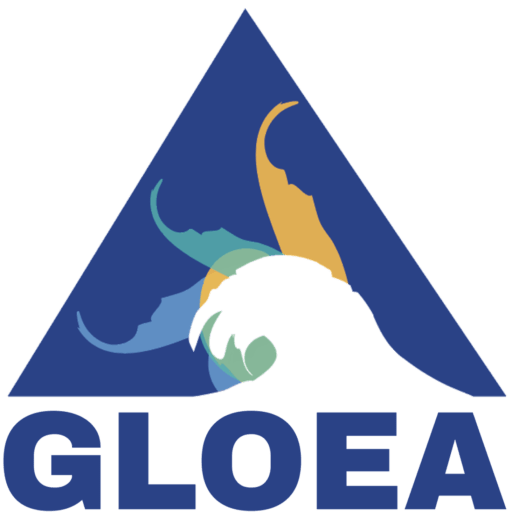GLOEA PROJECT PIPELINE
Developing an Ocean Energy Industry
There is an Ocean Energy Technology Solution For Every Small Island Developing State and Coastal Least Developed Country: Thermal, Wave, Tidal, BioEnergy, and others. But these nations have a low capacity to capitalize on our largest renewable energy source to create an ocean energy industry that can support adaptation efforts and build climate resilience.
The deployment of commercial-scale demonstration ocean energy technologies in Small Island Developing States (SIDS) and Coastal Least Developed Countries (LDCs) are needed to validate the operational performance of the science, which is critical to attracting large scale private investment, and convincing government that ocean energy can deliver a low-carbon economy that generates sustainable blue-green gender-equity employment to replace those lost due to the negative impacts of climate change significantly reduce balance of payment and external debts.
The demonstration projects below represent ocean energy technologies in the Caribbean, Pacific, and African coastal countries, which are designed to convert kinetic and thermal ocean resources into clear electricity to meet demand or input in industrial processes to produce goods and/or services, such as fertilizers, desalinated water, transportation fuels, and energy to regenerate coral reefs to address sea level rise and coastal erosion.
At least three (3) regional packages, comprising fifteen (15) projects, are being developed with private sector companies for deployment by 2033, in line with the SIDS DOCK Goal: we’re not going to meet the 2030 SDG.
For more information on SIDS-Appropriate Sustainable Energy Technologies:
STEPUP© PROCESS
Due to certain limitations, SIDS and coastal LDCs have been unable to take advantage of ocean energy technologies. There is limited capacity and awareness about the practical application of ocean energy. These and other barriers require a business case for specific ocean energy projects. The STEPUP© 6-Step process familiarizes and guides SIDS experts, technology partners, investors, financiers, and policymakers.
Member country assisted to identify potential opportunity
Technology partners validate the feasibility of a solution
Financial/technology partners present a proposal for member review
Member country negotiates with financial/technology partners
Technology partner builds the platform at the pilot site
Technology partner hands over and continues to build capacity
PILOT OCEAN ENERGY PROJECT CURRENTLY UNDERWAY
3 COUNTRIES: Belize, São Tomé and Príncipe, Tonga
POTENTIAL PILOT OCEAN THERMAL ENERGY CONVERSION (OTEC) PROJECTS
12 COUNTRIES: Antigua & Barbuda, Bahamas, Barbados, Belize, Dominican Republic, Fiji, Grenada, Jamaica, Samoa, Sao Tome and Principe, St. Lucia, Tonga
POTENTIAL PILOT WAVE ENERGY PROJECTS USING SEABASED TECHNOLOGY
7 COUNTRIES: Grenada, Mauritius, Samoa, Seychelles, St. Lucia, St. Vincent and the Grenadines, Tonga
POTENTIAL PILOT OCEAN BIOENERGY TECHNOLOGY PROJECTS
Utilization of Marine Biomass, Carbon-Based Waste Material From Municipal Solid Waste,
and Agriculture and Forestry for the Production of Electricity and Liquid Fuels
POTENTIAL PILOT LIVING BREAKWATER TECHNOLOGY PROJECTS
2 Countries: Kingdom of Tonga, Tuvalu
THE BIOROCK SHORE PROTECTION PROJECT: This project will regenerate reefs using the electrolytic mineral accretion system (Biorock), comprised of structures fabricated from steel reinforcing bars placed into and attached to the ocean floor. These structures are then provided with low voltage direct current to grow solid limestone rock (calcium carbonate – CaCO3) over the structure and support the growth of native corals. Within months these structures have increased surface area, energy from incoming waves is significantly reduced at the shore and sand starts to accumulate instead of being washed away. The growth of the BIOROCK® reef is accompanied by fishes, crabs, corals, mangroves, and increased diversity of marine life.
Unlike traditional seawalls, which increase erosion in front of them and eventually collapse, Biorock reefs are living structures that grow back where damaged and can grow upward faster than sea level rise so they will not be overtopped like hard sea walls. The CaCO3 that grows on the structure is stronger than concrete, and the rebar is completely protected from rusting.
The estimated cost of the living breakwater is US$5000/meter versus over US$22,000/meter for traditional concrete seawall.
PROJECT LOCATION MAP
CARRIBEAN REGION
PROJECT LOCATION MAP
PACIFIC REGION
